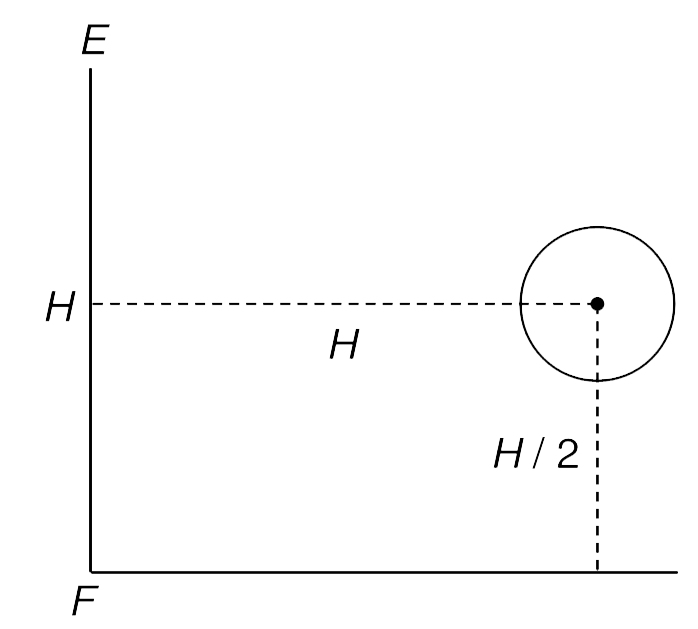The eye ball protrudes from the orbit with the contraction of
Retractor bulbi muscles
Protractor lentis muscles
Levator bulbi muscle
None of the above
The correct Answer is:C
Step by step video, text & image solution for The eye ball protrudes from the orbit with the contraction of by Biology experts to help you in doubts & scoring excellent marks in Class 12 exams.
Updated on:21/07/2023Topper's Solved these Questions
Similar Questions
The actinide contraction differs from lanthanide contraction ? Explain.
View SolutionIn the Figure FE is a man of height H standing on a floor. E is eye of the man and F is his foot. The distance between eye and the head is negligible. A steel ball of radius r is suspended in front of him. The distance of the ball from the man is H and height of the centre of the ball from the floor is H2. It is given that r<<H. The surface of the ball acts like a mirror and the man sees his image in it. Calculate the angle subtended by the image at the eye of the man.

View Solution
Knowledge Check
The eye rotates in the orbit by
A6 musclesB3 musclesC4 muslcesD5 musclesEye ball muscles are :
AStriated and involuntary muscleBNon - striated and voluntary musclesCNon - striated and involunatary muscleDStriated and voluntary muscleEye lens is formed from
AEctodermBMesodermCEndodermDEctoderm and mesoderm.
A playful astronaut raleases a bowling ball, of mass m= 7.20 kg, into circular orbit about Earth at an altitude h of 350 km.
(a) What is the mechanical energy E of the ball in its orbit ?
(b) What is the mechanical energy E0 of the ball on the launchpad at the Kennedy Space Center (bofore launch) ? From there to the orbit, what is the change ΔE in the ball's mechanical energy?
View SolutionActinoid contraction is greater from element to element than lanthanoid contraction Why?
View SolutionExplain the type of action involved in the contraction of pupil when the eyes are exposed to the bright light.
View SolutionIsothermal expansion from state A to B, isochoric pressure increment from B to C, isothermal contraction from C to D, isobaric contraction from D→A.
View SolutionAssertion:Choroid layer is thick over the posterior two-third of the eye ball but it becomes thin in the anterior part.
Reason:Choroid layer lacks blood vessels It forms ciliary body in the anterior part of the eye ball.
View Solution

